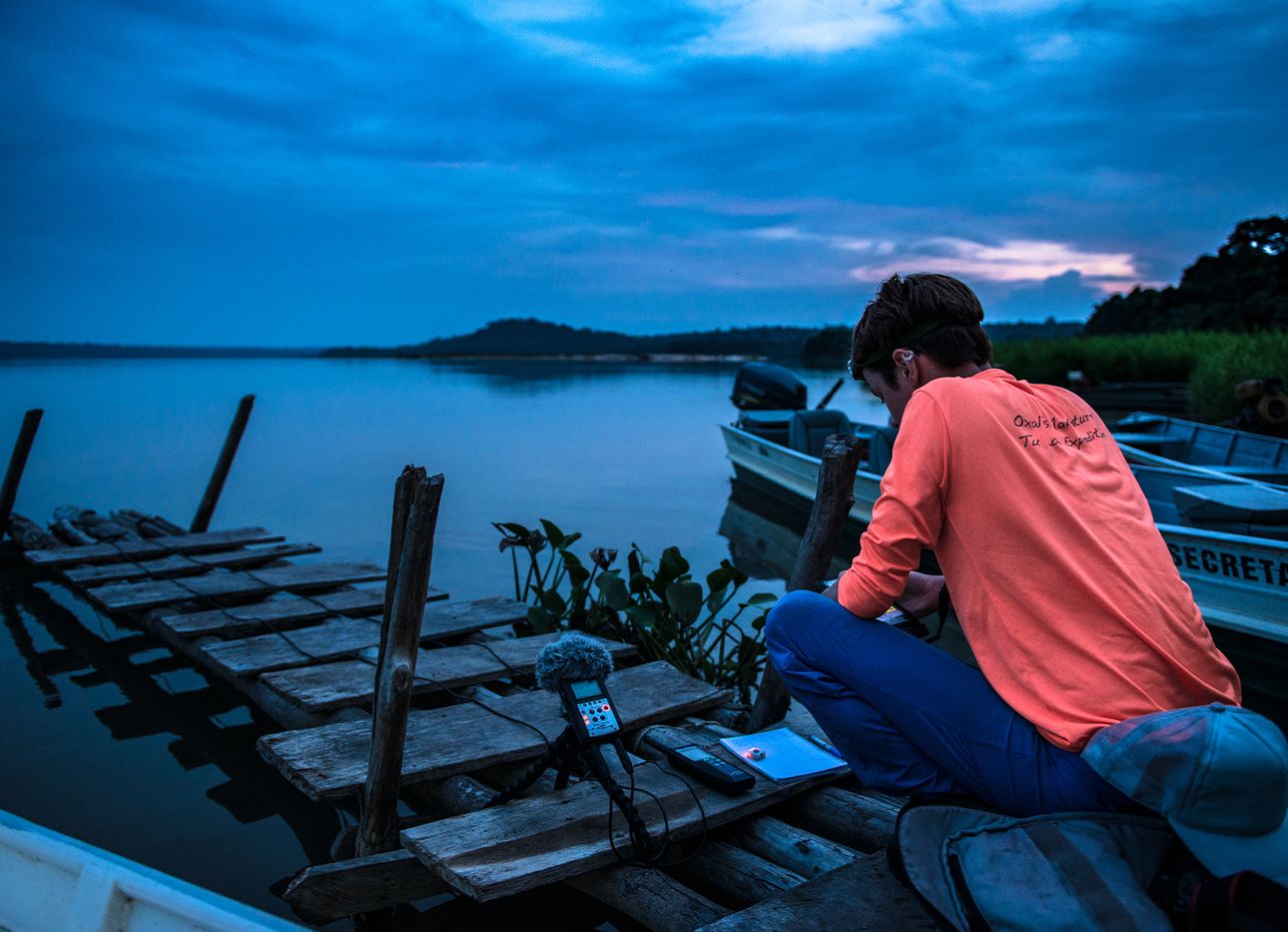
This London Studio Draws on Smell-O-Vision as a Tool for Promoting Social and Environmental Advocacy
In Aldous Huxley’s Brave New World, movie-watching is taken to the next level: Viewers sit in seats outfitted with special knobs that, when grasped, transmit sensations that the film’s characters are experiencing in their own bodies. The invention popped into Grace Boyle’s mind when she began experimenting with virtual reality, and served as the inspiration for her London-based studio The Feelies, founded in 2015, which produces and presents stories in immersive, multisensory environments.
The concept is hardly a gimmick: Boyle, who previously worked as an environmental researcher and communications specialist at Greenpeace, firmly believes that humans are emphatically sensory beings, and that effective storytelling requires engaging more than just the eyes and ears. If done right, she sees the method as a means not just to entertain people, but to help preserve the planet. “In order to protect a natural resource, we need to understand its value for us,” she said at a 2018 forum in Frankfurt, adding that people generally come to care about something either by learning about it via media and research or by firsthand experience. Incorporating senses other than vision and hearing—particularly smell, which has a direct line to the parts of the brain concerned with memory and emotion—into a cinematic event is one way of creating that emotional, embodied kind of value that can prompt people to act.
Boyle’s fascination with augmenting video with sensory stimuli has taken many forms. Working with perfumers, technologists, production designers, scientists, and artists, she has mounted projects such as Clouds Over Sidra (2015), a 360 video backed by the United Nations that takes viewers, who watch it while wearing V.R. headsets, to the Za’atari refugee camp, in Jordan. The environment emerges through scents, including cumin and the desert’s winter draft, that are pumped into the air by technicians.
“We Live in an Ocean of Air,” a sense-engaging V.R. installation at the Phi Centre, in Montreal (on view through January 16, 2022), highlights the invisible yet profound relationship between plants and humans. Inside, viewers are transported to California’s Sequoia National Park, which springs to life through a series of odors Boyle’s team made by analyzing the molecular compounds in an actual grove of the trees.
In a similar vein, the award-winning multisensory experience Munduruku: The Fight to Defend the Heart of the Amazon (2017), a collaboration between The Feelies, Greenpeace, and AlchemyVR, follows the Indigenous people of the Brazilian Amazon and shows how their land along the Tapajós River basin is threatened by large-scale industrial projects. Boyle and her team lived with the Munduruku for two weeks, taking in the atmosphere of the rainforest. They mimicked its smells through a complex olfactory narrative—including a rich, layered jungle aroma and a metallic stench of machinery—deployed by custom scent machines during the film, along with wind, heat, and palpable low-frequency sounds.
Such scientifically precise enhancements allow Boyle to connect people with places where social and environmental crises are an immediate, everyday reality. She regularly collects feedback from audiences, who attest to her work’s transformative power. “I could feel exactly what it’s like to be there and smell the woods,” one Munduruku viewer said. Another suggested a more fundamental shift: “The experience changed my view on the importance of the citizen in society in relation to deforestation.” Here’s to hoping Boyle continues to tackle such crucial subjects, and alter perspectives, one nose at a time.